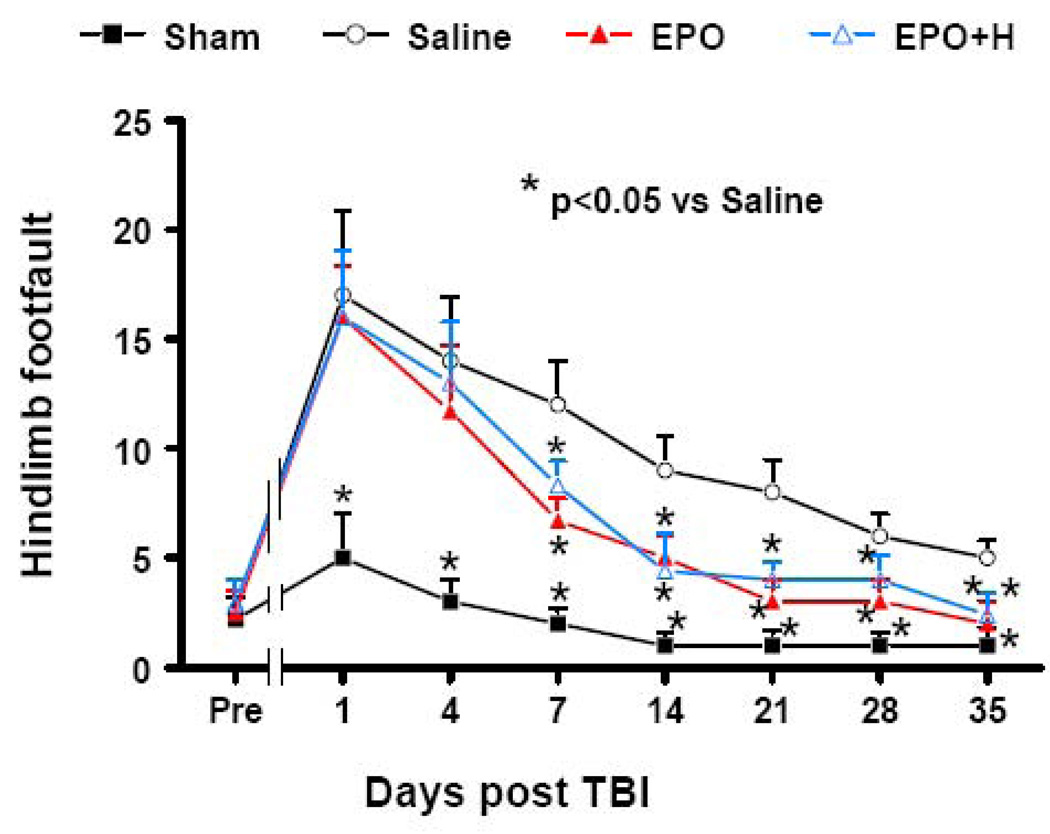Fig. 2.
Graphs. A: Effect of EPO on spatial learning function 31–35 days after TBI. Delayed treatment with EPO (both EPO and EPO+H groups) improves spatial learning performance measured by a recent version of the water maze test at days 33–35 compared with the saline group (P<0.05). Hemodilution did not affect the spatial learning performance compared to EPO alone group. Data represent mean ± SD. * P<0.05 vs. Saline group. N = 6 (Sham); 6 (Saline); 6 (EPO); 7 (EPO+H). B: Effect of EPO on sensorimotor function (forelimb footfault) before and after TBI. “Pre” represents pre-injury level. Delayed EPO treatment significantly reduces forelimb foot faults at days 7–28 compared with the saline group (P<0.05). Hemodilution did not affect forelimb footfaults compared to EPO alone group. Data represent mean ± SD. N = 6 (Sham); 6 (Saline); 6 (EPO); 7 (EPO+H). C: Effect of EPO on sensorimotor function (hindlimb footfault) before and after TBI. “Pre” represents pre-injury level. Delayed EPO treatment significantly reduces hindlimb foot faults at days 7–21 compared with the saline group (P<0.05). Hemodilution did not affect hindlimb footfaults compared to EPO alone group. Data represent mean ± SD. N = 6 (Sham); 6 (Saline); 6 (EPO); 7 (EPO+H). D: The bar graph shows the functional improvement detected on the modified neurological severity scores (mNSS). EPO treatment significantly lowers mNSS scores at days 7–35 compared to saline group (P<0.05). Hemodilution did not affect mNSS scores ompared to EPO alone group. Data represent mean ± SD. N = 6 (Saline); 6 (EPO); 7 (EPO+H).




